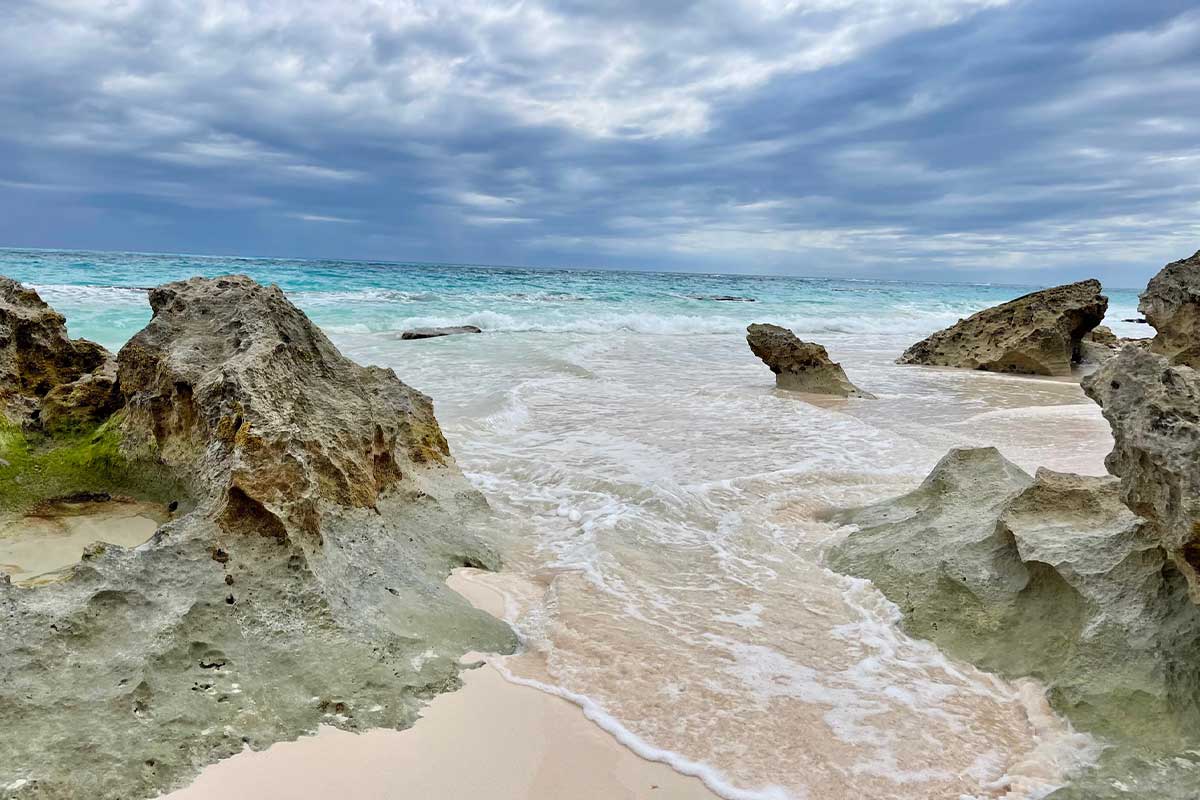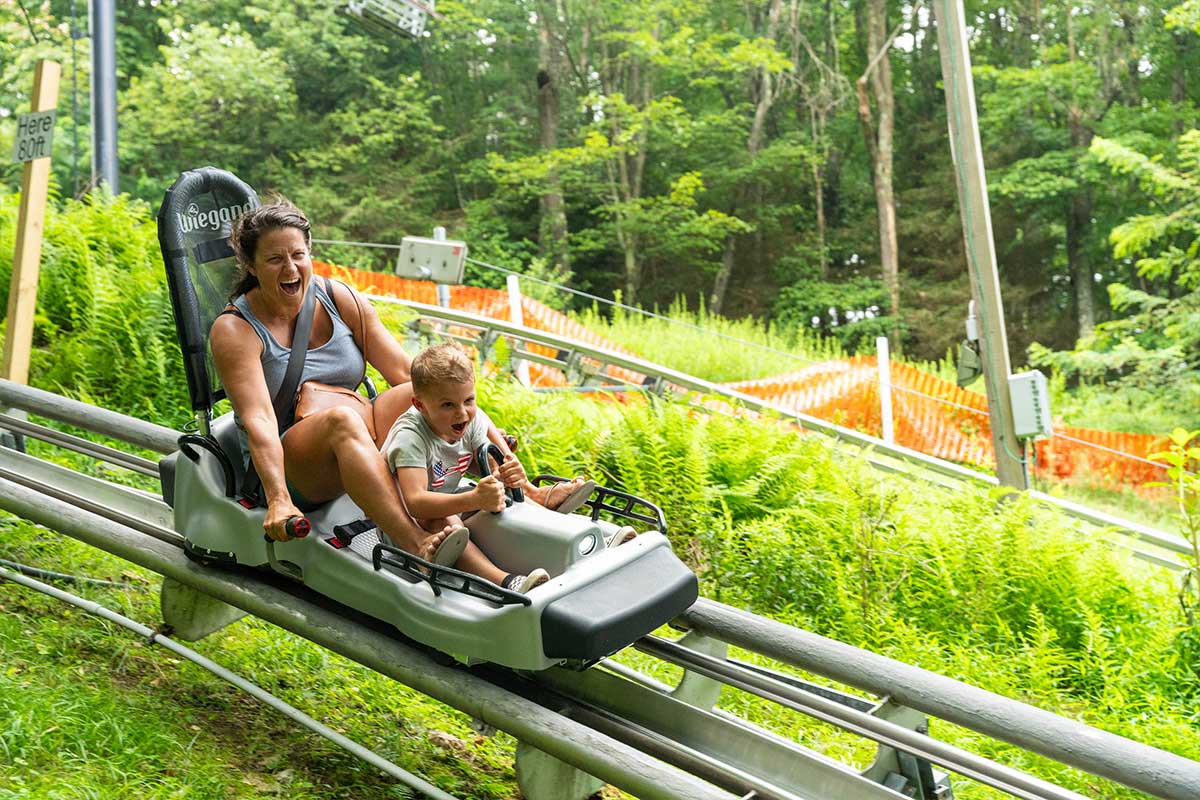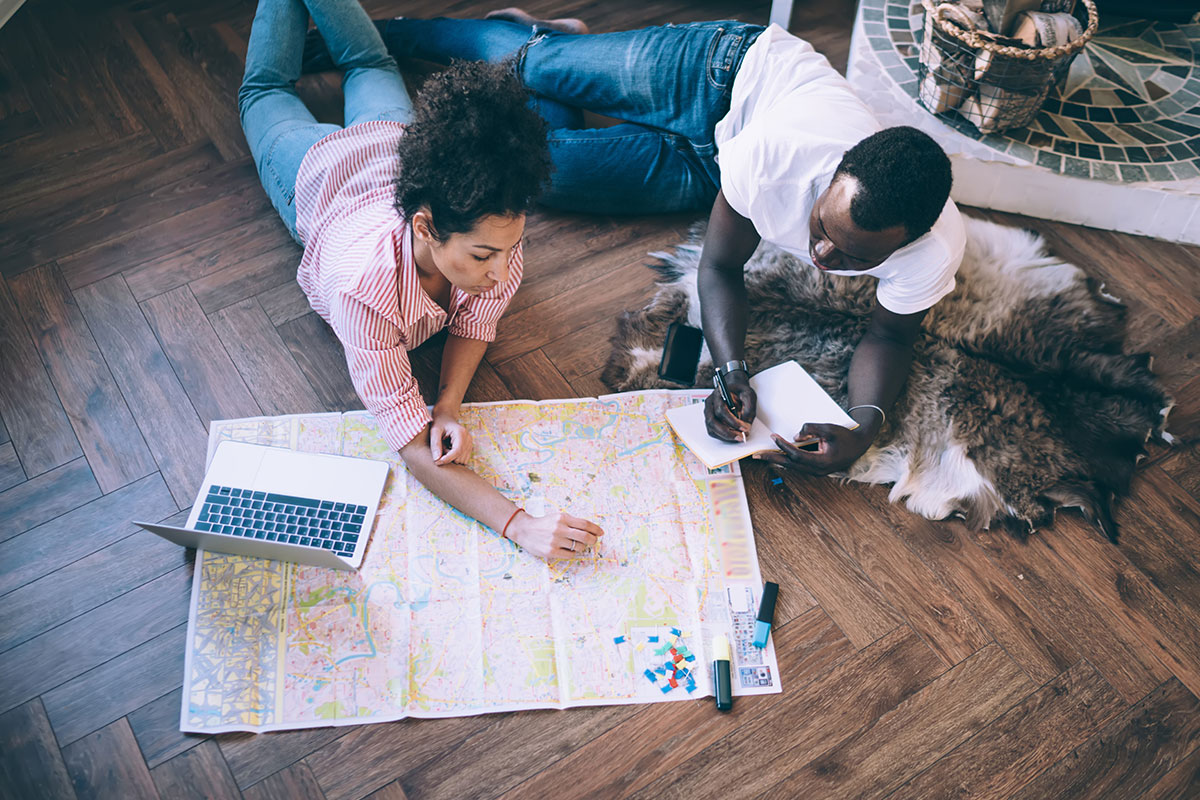
Sure, spontaneous trips are fun. You can make a handful of quick decisions and be on your way to a new place in no time. But when it comes to reaching faraway locations, traveling with family or friends and making the most of a trip, planning is your best bet.
The best place to start is to ask yourself: What am I looking for in a trip, and where do I think I’ll find it?
There are quite a few priorities to have when traveling, and they differ from person to person. Spending time away from home and work means finding time for the activities that will bring you peace and relaxation. So, what are you truly looking for when you travel?
If you’re looking for more time away from a desk and to get moving, visiting a location near or within a national park or a city with lots of walking options should be taken into consideration. You’ll spend time in the fresh air, whether it’s exploring among the trees or trekking down sidewalks in new parts of town, and not regret a single moment you weren’t stuck sitting at your desk or on your couch.
If you’re looking for a way to unwind in more ways than one, look into areas that offer spa packages or nearby wellness locations, as well as wine tours or relaxing seats by the pool. If you take the car, you’ll have the flexibility to wind your way around the new place to find your serenity spots, or if it stays parked at home, you could find an all-in-one location that has everything you need just outside your door.
If you’re looking for family time, be sure to think about what your family loves to do already. Travel offers an excuse to get outside of your comfort zone, but you don’t want to make a vacation a challenge either. If you haven’t hiked or camped together before, maybe take the outdoor exploring one step at a time. If you’re looking to venture around a new place, be sure to add in things that mix the familiar with the new. You and the kids will find yourselves learning new things and still staying sane on a great trip.
Whether you’re hoping to travel this summer or coordinating a trip far in the future, taking the time to research (and daydream) about your vacation can make it even more meaningful. It’s your trip, do what you love!
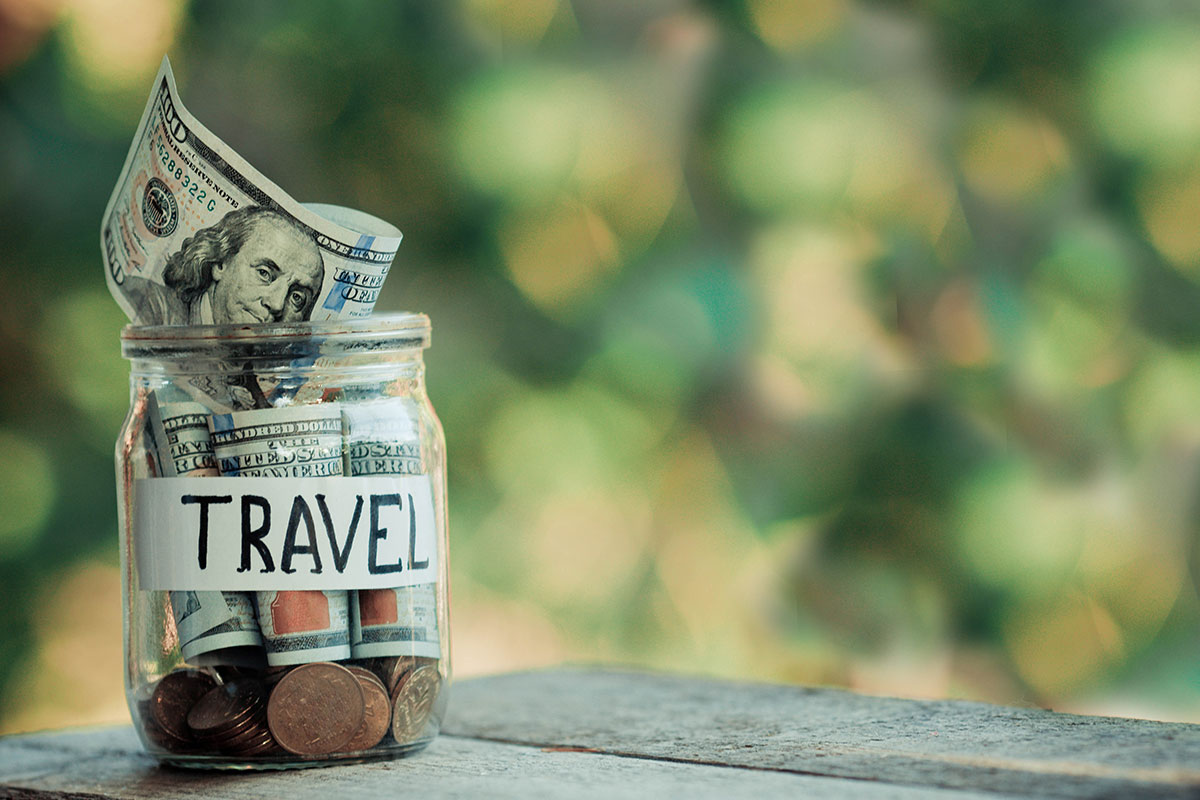
4 Ways to Plan Effectively
Start Early
Even if it seems too far away, planning early allows for benefits in a number of ways. First, you’ll have time to set aside the funds you want to spend on your trip in a savings account or otherwise, which will help you feel more comfortable about spending while on vacation. Second, it will allow for savings in other areas, such as buying cheaper flight tickets, booking hotels or rentals and buying tickets for activities online. Lastly, it will give you the space to really consider everything you want to do. Even if you aren’t a checklist person, having more time for research before taking off will help you get to know the area, what activities are present and how you can make the most of your time and money.
Include Everyone
If you’re planning a trip for the whole family, it’s best to let everyone have at least a little say on how they want to spend their time. Of course, kids activities are always going to be included when the little ones are around, but what about those extra, vacation-only activities? Parents should look into ways to occupy the kids if in need of a long walk or a trip to the spa. Those traveling with older children or other adults should consider a location that’s near local activities and accommodates others’ needs, as well as their own. And finally, enjoy talking about it! If you’re going to share the future memories together, it’s best to make sure everyone’s on the same page before you embark.
Bring Snacks
This might sound like the funniest of them all, and not quite planning, but trust us, it might just be the most important. No one wants to deal with a disgruntled, hungry traveler, especially when traveling during mealtimes. Prepack small, grab-and-go snacks for everyone, taking note of favorites when someone might be in need of a pick-me-up, and those that carry more nutritional value so they can be energizing, filling and satisfying. Not only will you combat the hunger pains (your own and everyone else’s), you’ll save money on tempting snacks at the convenience stores, and have something to look forward to tucked away in your bag.
Be Flexible
As soon as you pack your suitcase and ready the car, chances are, anything is fair game. Unpredictable circumstances, mood swings and time delays will affect everyone, and the best way to address these is with a level head. Accept beforehand that things will go wrong, and it’s up to you to decide how the situation will play out. If it helps to calm your pretravel anxiety beforehand, write out a few solutions for problems you think might come up, and use them as your game plan just in case something does happen. Even if it doesn’t, you’ll be comforted in knowing you thought ahead and weren’t caught off-guard.
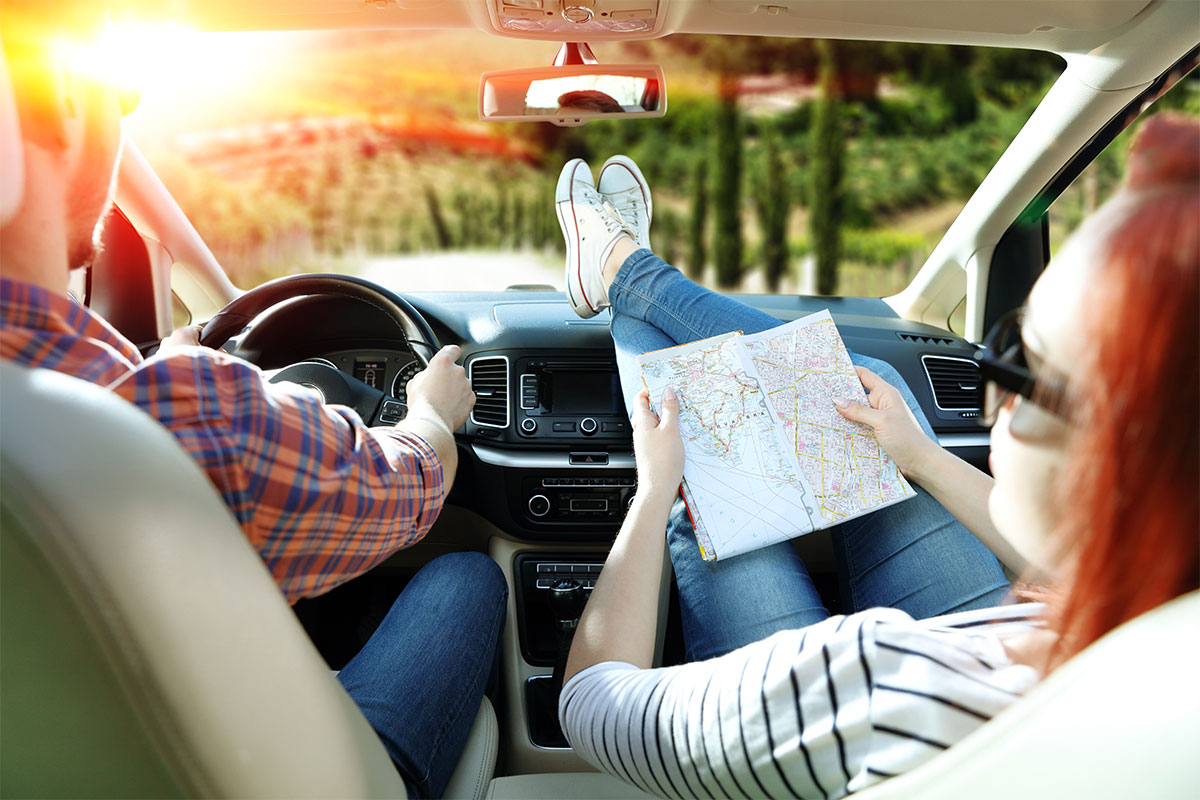
Road Trip Recovery
There’s bound to be something that delays your road trip, and it’s not only going to be bathroom breaks. For when an emergency strikes, here’s what to have in your car at all times to ensure your safety, efficiency and preparedness.
Jumper Cables
Just like sunscreen, we’re sure this transportation essential is already on your list. But double check to make sure you put them in the trunk. You never know when a car’s battery could tucker out, or another traveler might just need a hand.
Flashlight and Extra Batteries
When it comes to trying to look under the hood of a car, or digging around in the backseat for that lost toy, the flashlight on your phone won’t be very much help. Get yourself a portable, super-bright flashlight to take along for the ride. It doesn’t have to stay in the car for the rest of the trip and extra batteries will ensure it stays powered as long as you need it.
First-Aid Kit
Bumps, bruises and cuts galore, if you have kids, you know this one is mighty important. Pack your first-aid kit with bandages both big and small, compression dressings, antiseptic wipes, medicated ointment, medical tape, disposable gloves, an instant cold compress and more to make sure you’re ready to treat whatever comes your way.
Cell Phone Car Charger
Whether you can plug your phone into the car’s USB port or you need a portable charger with an operating cord, having a fully charged phone will always be to your benefit, especially on a road trip. Make sure before you leave that those pesky cords end up in the car, with enough to share with the rest of the group too.
Seasonal Items
Depending on when you’re traveling, there are various items that will help in an emergency based on the weather and outdoor temperature. Based on the travel area’s climate, consider tools for winter weather (snow shovel, ice scraper and kitty litter for traction), or summer weather (rain ponchos, additional water for hot days and umbrellas).
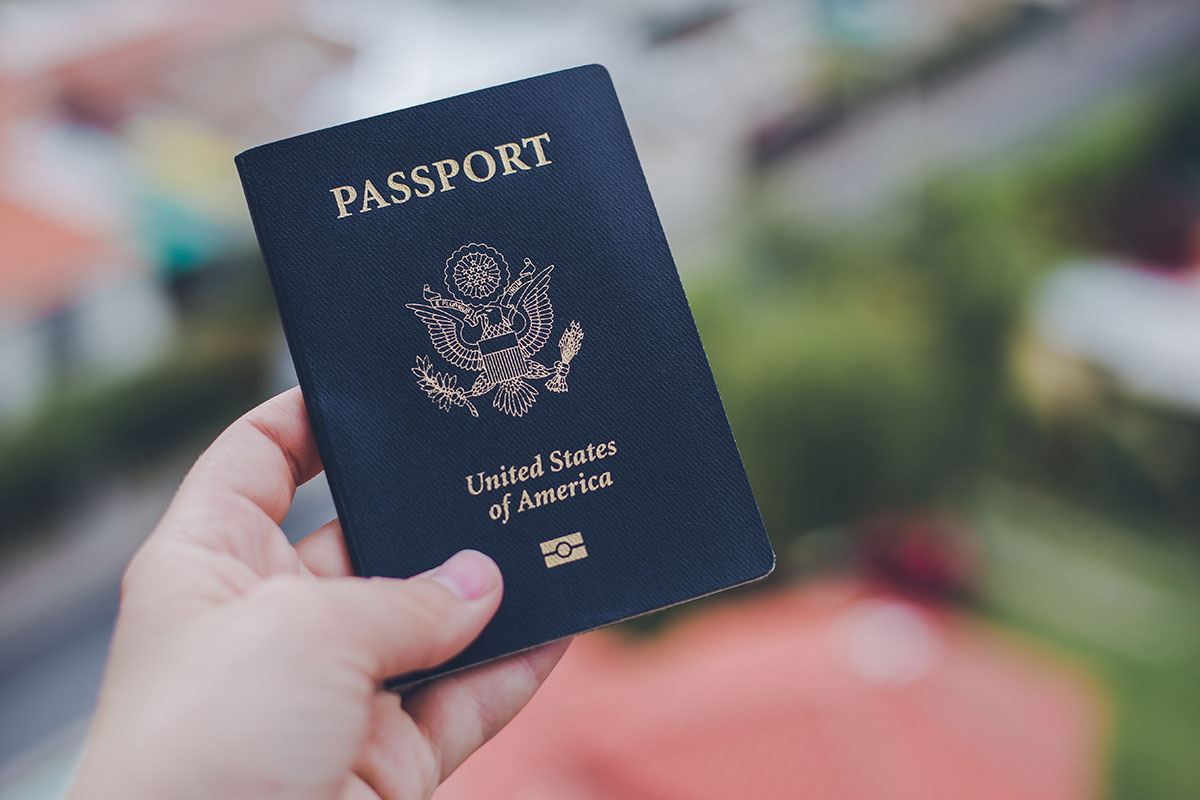
Prep Your Passport
If you’re planning to travel internationally or board an island-hopping cruise ship, you’re going to need a passport (other than if you’re visiting Puerto Rico, the U.S. Virgin Islands, American Samoa or Guam). The process may seem simple enough, but you might need to prepare up to 12 months beforehand to make sure you have everything you need in time.
Plus, there are a few additional checkboxes you might want to mark off before you leave.
Most countries require citizens to have a passport that is valid up to six months after scheduled travel. To meet the requirement (and have the comfort of knowing your passport won’t expire overseas), make sure to renew before you leave. You also cannot renew a passport that has been expired for more than five years (meaning within 15 years of getting your original passport).
So, if you’re looking to be as prepared as possible, we’ve broken the U.S. passport process down in super-simple summaries to help you navigate through, no matter where you’re headed.
Getting a Passport for the First Time
The first (and probably most important) part of applying for your first passport is that you must apply in person. Online, you’ll be able to quickly access all of the needed forms, proof of citizenship and identification documents and photo requirements, but you’ll need to find a nearby location, often a U.S. Post Office, to set up an application appointment. Once you have a set time on the calendar, attend the appointment to go over all of the forms, take your photo (unless you get this done elsewhere!) and submit the full application with a professional. Receiving your first passport can take up to four months (16 weeks) or more depending on the influx of applications, so get this done early. Once you’ve got your passport in hand, the possibilities are endless.
Renewing Your Passport
You know you have your passport laying around somewhere … the only problem? It’s been over a decade since you’ve used it last. Since U.S. passports are only valid for 10 years (or seven years for children), you will have to renew your passport, and offer an updated photo. If it’s been longer than five years that the passport has expired, you must renew in person, following a majority of the steps listed above. But, in modern-day times, you are able to renew your U.S. passport by mail. Fill out the DS-82 form fully, submit your most recent passport, any updates or changes, a new photo and a completed application, and you’ll be set. Just make sure before you do it all yourself that you qualify for renewing by mail. All requirements can be read on the U.S. Department of State’s website.
Getting a Passport for Your Child
Even the littlest travelers are not exempt from having a U.S. passport to cross international borders. In the United States, a children’s passport applies to all under 16 years old. All children must apply in person, with two parents or guardians present and a proper DS-11 form. All of the requirements are the same as an adult passport, including proof of citizenship (which can double as identification if the child does not have an accepted form of photo ID) and a current photo (either taken on-site or by an authorized photographer). The child must also have parental consent and paperwork to show the parental relationship to the child. With all of these documents in mind, be sure to double check the requirements before making an application appointment, and consider adding your renewal or first-time application to the same appointment to save time in the long run.
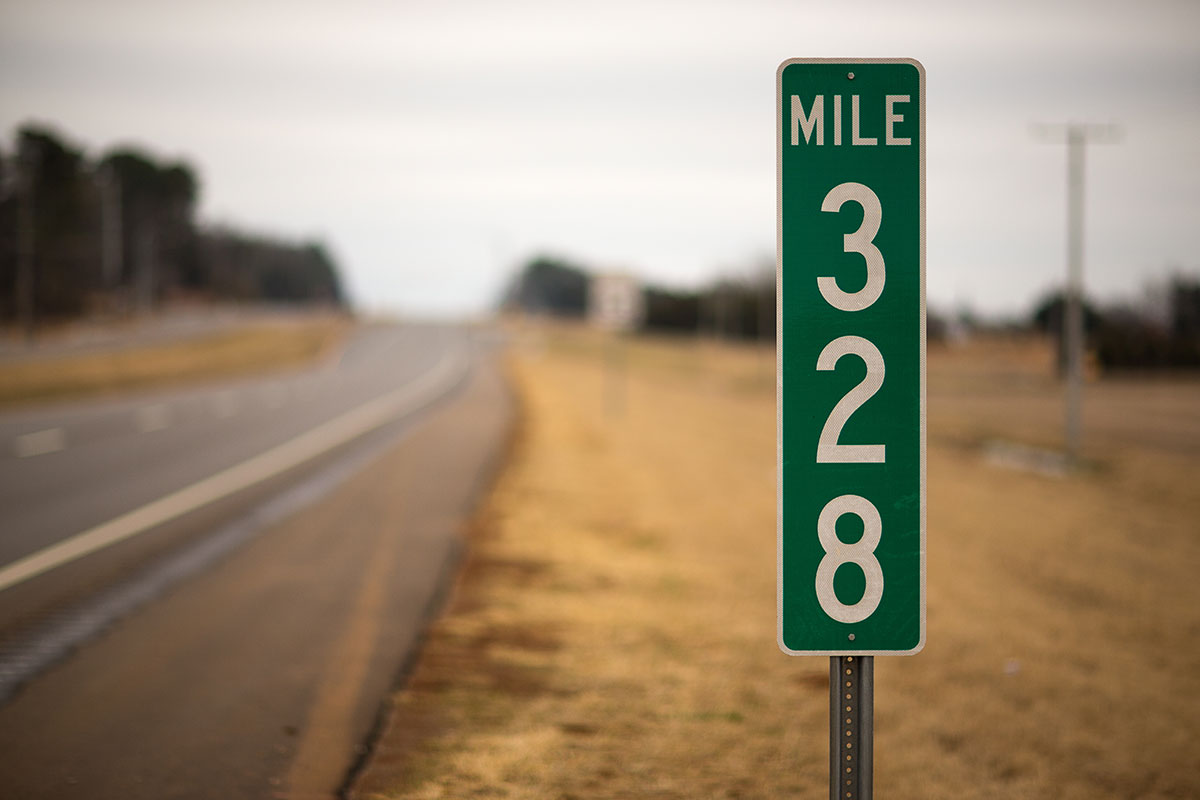
Mile Markers
88,633 miles
The total number of miles in the United States that are along a coastline, and because the country is so diverse, coasts can range from beautiful sandy beaches to gorgeous rocky terrain.
36,123 miles
In November 2016, Greg Cayea and Heather Thompson broke the Guinness World Record for the longest journey by car in a single country. They toured the United States from July to November in a 2008 Subaru.
10,000 miles
In late 2019, ‘Project Sunrise,’ a nonstop flight from New York City to Sydney, Australia by Qantas took a small handful of passengers for the first time on the route, clocking in at 20 hours in the air.
2,668 miles
The estimated total number of miles it would take to travel from Washington, DC to Los Angeles, California. You might be wondering how long that will take you in a car. It’s a minimum of 40 hours, or just under two full days.
469 miles
The total number of miles of the scenic Blue Ridge Parkway, and the ultimate road trip on the East Coast.
160-180 miles per hour
The average speed of a plane at takeoff.
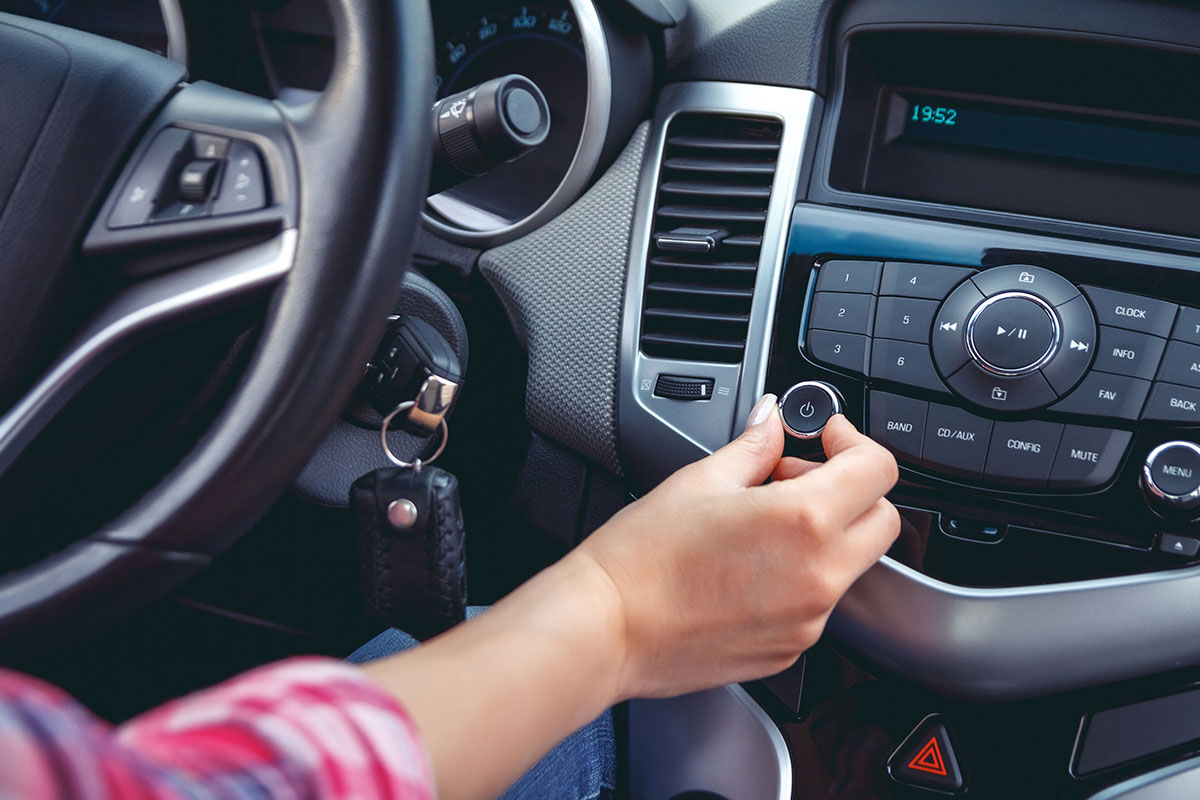
Tune In: 5 Podcasts Worth Downloading
How I Built This with Guy Raz
The trials and tribulations of starting a business—especially one that becomes a part of everyday life for millions—are always interesting. Listen to Guy Raz as he interviews business owners from ice cream shops to tech companies, and how they turned their dreams into reality. You might just be surprised to learn behind-the-scenes information on Chipotle Mexican Grill, Ben & Jerry’s and much more.
Crime Junkie
We know you’re out there, those of you who can’t get enough of crime television and even more fascinating, in-depth stories. From infamous crimes and suspicious murders to conspiracy theories and missing persons, you’ll be sure to get your fix with this veteran podcast.
Ologies
Calling all current, future and wishful scientists, this is the podcast you’re looking for. Perfect for long drives or flights, each episode dives deeply into a topic such as gastroegyptology (bread baking), genealogy (family trees) and much more, with topic experts and added humor to match. Double check before listening to make sure the episode is kid-friendly too.
Little Stories for Tiny People
Sometimes, your imagination on bedtime stories or travel entertainment just dries up. If you’re looking to let your kids dream up a fun, fantastical story—but they’re just not wanting to pick up that book—this podcast is for you, but mostly for them. Follow little hedgehogs, swimming fish and even multi-episode stories for your little ones.
Pop Culture Happy Hour
If you’re just done listening to music or catching up with Netflix for the time being—but still want to talk about it—get your pop culture fix with this NPR podcast. From movie buffs to binge-watchers, there’s an episode for you to enjoy, and added happiness tips along the way.

Summer Travel Essentials
Whether you’re headed to the mountains for a day of hiking, or straight to the coast to sink your toes in the sand, your skin is sensitive and it needs to be protected. With hot temperatures and sun-filled days on their way, it’s more important now than ever to prepare for sun protection. Here are five essentials you need to stay safe and smart while traveling this summer.
Sunscreen
We’re sure it’s on your list already, but a little reminder doesn’t hurt. Consider this a sign to head to the store to buy a new bottle of sunscreen for the season, or check those expiration dates on the ones stored in the cabinet. If you must be in the sun, sunscreen is your best bet!
Sunscreen Lip Balm
When slathering on sunscreen, it’s easy to forget what other parts of your body need protection from UV rays other than just your nose and toes. Sunscreen lip balm is offered in a wide variety of brands and SPF levels, so make sure your lips stay protected, even if it’s a cloudy day.
Sun Hat
You may think the top of your head is protected by your hair but those who have gotten sunburn on their scalp will tell you otherwise. Help protect your scalp, face and eyes from the sun with a trendy, in-style sun hat this season, or even throw on a baseball cap to reflect the sun and keep yourself cool (hello, ponytail!).
Sunglasses
Did we mention your eyes? Not only will a good pair of sunglasses keep you from squinting the day away, they will also offer protection from UV rays, helping prevent the development of cataracts and potential skin cancer around the eye area.
Swimsuit Cover-Up
Aside from offering comfort while lounging at the pool or on the shore, a swimsuit cover-up adds even more protection from the sun, as long as it’s not just sheer fabric. Throw one over your shoulders for when you’re taking a walk or sitting in the shade and your skin will thank you later.
For more travel-inspired content, subscribe to our Travel newsletter.


